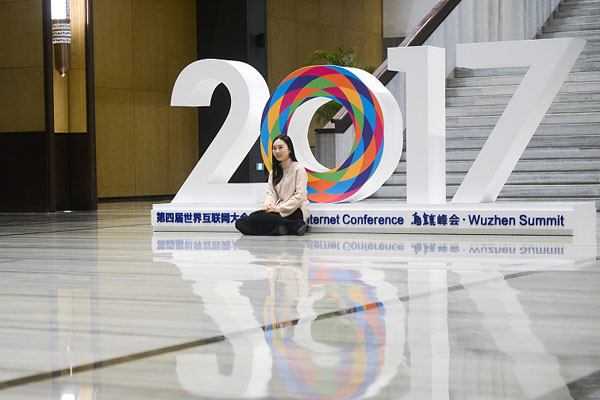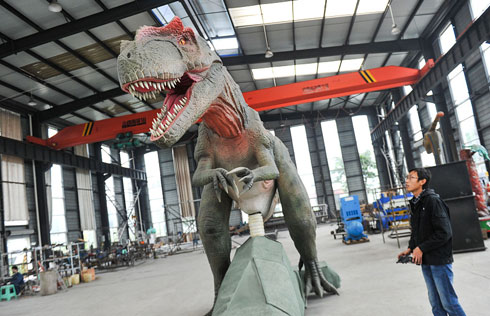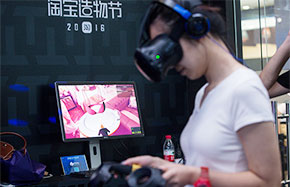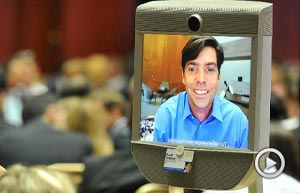Information and news about China 3D print enterprises, 3-D print technology trend setters, consumer electronics, gadgets, geek stories, videos and photos about product reviews, fashion design, lifestyle and international tech events from China Daily and China Daily website.
Nation's history takes on a new dimension
Updated: 2013-06-08 07:52

They have suddenly become buzzwords in China, catching the attention of a curious public, but for museums and archeologists 3-D printing technology has been fueling a boom in duplicating and restoring ancient relics with the highest degree of accuracy.
Reproductions of two clay Buddhas from the Mogao Grottoes, a UNESCO world heritage site in Gansu province, were presented at last month's China International Cultural Industries Fair in Shenzhen, Guangdong province. The 0.6-meter-high statues were created by using 3-D prints.
Additive printing, or 3-D printing, is a process of making a three-dimensional solid object of virtually any shape from a digital model. 3-D printing is achieved using an additive process, where successive layers of material are laid down in different shapes.
Wu Jian, director of the digital center at the Dunhuang Academy in Gsansu, said: "We've been using 3-D scanning to collect information on Buddhist frescos for more than 10 years. Now 3-D printing is taking the Buddhas from the caves to the public.
"This technology is the way forward in terms of duplication," said Wu, a researcher at the academy for 32 years.
In 2011, 16 glass sculptures of humans and animals, all 3-D productions, went on public display in Xi'an. They were replications of stone sculptures standing beside the tomb of General Huo Qubing in Shaanxi province. The general died more than 2,000 years ago.
Zhao Donglai, vice-president of Shining 3D Tech Co, based in Hangzhou, Zhejiang province, said the company spent 20 months producing the 16 sculptures, with each weighing 200 to 300 kg. The original stone sculptures are too big to move.
The company used 3-D scanners to scan the sculptures, printed out the models and then produced the duplications by glass-firing.
Li Tao, president of the company, said: "3-D printing has very high accuracy when applied to making copies of cultural relics ... The scanning degree of error is about 50 micrometers, the size of five pieces of human hair."
Li said the 3-D scanners and printers can be compared to human eyes and hands. Besides duplication, 3-D printing is being used to restore damaged antiques and cultural relics.
Zhao said the company has restored many antiques at archeological sites. It scans the pieces one by one and numbers each piece on a computer. The restoration is completed on the computer first and then repairs are made to match.
"It's easy and safe compared with the traditional methods," Zhao said.
When certain parts are missing from the relics - for instance, a chipped cup - they can scan it first and then print the missing part based on data from the computer and other cups of the same type and from the same period, Zhao added.
The company usually uses resin as the printing material. Fine-tuning the color of the printed lost part to match the cup is the last step in the repair work.
And the final result?
"It's difficult for people to see that the cup was once chipped," Zhao said. "There is almost no trace of the repairs."
The traditional method of repairing relics requires them to be measured, photographed and repaired by hand. Apart from a low degree of accuracy, this is also expensive and takes a lot of time.
Zhao said the company has repaired 15 pieces of damaged pottery, about 0.3 meters high, in a week for less than 30,000 yuan ($4,890).
Wu Jian, the director of the digital center at the Dunhuang Academy, said 3-D scanning technology is now very advanced in collecting data of relics in cases of sudden disasters.
Shanghai Museum started to use 3-D printing to restore relics early this year and now has a collection of pottery repaired by using the technology.
Chen Kelun, deputy curator at the museum, said, "It has proved very efficient in restoring carved patterns."
dengzhangyu@chinadaily.com.cn
(China Daily 06/08/2013 page1)
-
 4th World Internet Conference concludes
4th World Internet Conference concludes
-
 Starbucks Reserve Roastery set to open in Shanghai
Starbucks Reserve Roastery set to open in Shanghai
-
 Smile to get discounts in Tmall's unmanned supermart
Smile to get discounts in Tmall's unmanned supermart
-
 Top 10 richest Chinese women in 2017
Top 10 richest Chinese women in 2017
-
 World leading internet sci-tech achievements released in Wuzhen
World leading internet sci-tech achievements released in Wuzhen
-
 Top tech CEOs take to the stage as Wuzhen Summit opens
Top tech CEOs take to the stage as Wuzhen Summit opens
-
 Major topics at 4th World Internet Conference
Major topics at 4th World Internet Conference
-
 'Made in China' dinosaurs amuse the world
'Made in China' dinosaurs amuse the world
-
 China's internet industry: Racing ahead on superhighway
China's internet industry: Racing ahead on superhighway
-
 Robots come to town, again
Robots come to town, again
- ...
-
 Top 10 brands most relevant to China's Generation-Y
Top 10 brands most relevant to China's Generation-Y
-
 Top 5 women billionaires in tech in 2016
Top 5 women billionaires in tech in 2016
- ...
-
 Xiaomi and China Mobile launch new Redmi Note 4 with hopes channels boost sales
Xiaomi and China Mobile launch new Redmi Note 4 with hopes channels boost sales
-
 E-shopper experience to go high-tech with Buy+
E-shopper experience to go high-tech with Buy+











